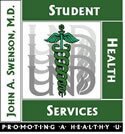|
Overweight & Obesity
Being overweight refers to an excess of body weight compared to set standards. The excess weight may come from muscle, bone, fat, and/or body water. Body Mass Index (BMI) is a method for assessing body fat. BMI uses your height and weight values to determine whether you are at risk for weight-related health problems. The lower your BMI, the lower your risk for health problems. A BMI of 19 to 24 is desirable. A BMI of 25 to 29.9 is considered overweight and one 30 or above is considered obese. A BMI of 30 in most cases means an individual is about 30 pounds overweight. One can be overweight without being obese, as in the example of a bodybuilder or other athlete who has a lot of muscle. However, many people who are overweight are also obese.
A number of methods are used to determine if an individual is overweight or obese. Some of them are based on mathematical calculations of the relation between height and weight, others are based on measurements of body fat. The definitions or measurement characteristics for overweight and obesity have varied over time, from study to study, and from one part of the world to another.
Body Mass Index Table
Open a BMI table in a new window, or use this web-based BMI form to find out your BMI.
Overweight and obesity are known risk factors for:
- Diabetes
- Heart disease
- Stroke
- Hypertension
- Gallbladder disease
- Osteoarthritis (degeneration of cartilage and bone of joints)
- Sleep apnea and other breathing problems
- Some forms of cancer (uterine, breast, colorectal, kidney, and gallbladder)
Obesity is associated with:
- High blood cholesterol
- Complications of pregnancy
- Menstrual irregularities
- Hirsutism (presence of excess body and facial hair)
- Stress incontinence (urine leakage caused by weak pelvic-floor muscles)
- Psychological disorders such as depression
- Increased surgical risk
It is unsafe to try to lose weight rapidly on fad diets. Many federal agencies have established guidelines to promote healthy lifestyles. Current recommendations by the American Dietetic Association, the U. S. Surgeon General, and the American Medical Association encourage people to eat a diet centered around the Food Guide Pyramid and the Dietary Guidelines for Americans. The Pyramid is printed on many food labels, especially cold cereal boxes. National Heart, Lung, and Blood Institute (NHLBI) guidelines provide you with a new approach for the measurement of overweight and obese and a set of steps for safe and effective loss. The National Center for Chronic Disease Prevention and Health Promotion provides healthy eating tips, nutrition and physical activity. The American Heart Association promotes An Eating Plan for Healthy Americans. The Centers for Disease Control and Prevention (CDC) have established obesity and overweight health topics.
If you are concerned that you or someone you know may have weight problem, please contact Student Health Services who will direct you where to get help. Dietitians are a wonderful source for advice and support in losing weight.
Resource Links:
v UND Emotional and Psychological Counseling and Therapy. (www.und.edu/dept/counsel/services.htm)
v U. S. Department of Agriculture, Food and Nutrition Information Center, Food and Nutrition Topics. (www.nal.usda.gov/fnic/etext/fnic.html)
v National Institute of Health, National Heart, Lung, and Blood Institute. Clinical Guidelines on the Identification, Evaluation, and Treatment of Overweight and Obesity in Adults. (www.nhlbi.nih.gov/guidelines/obesity/ob_home.htm)
v National Institute of Diabetes & Digestive & Kidney Diseases. Understanding Adult Obesity. (www.niddk.nih.gov/health/nutrit/pubs/unders.htm)
v National Institute of Diabetes & Digestive & Kidney Diseases, Statistics Related to Overweight and Obesity. (www.niddk.nih.gov/health/nutrit/pubs/statobes.htm)
v National Institute of Diabetes & Digestive & Kidney Diseases. Choosing a Safe and Successful Weight-Loss Program. (www.niddk.nih.gov/health/nutrit/pubs/choose.htm)
v National Institute of Health, National Heart, Lung, and Blood Institute. Selecting a Weight Loss Program. (http://www.nhlbi.nih.gov/health/public/heart/obesity/lose_wt/wtl_prog.htm)
v National Center for Chronic Disease Prevention and Health Promotion. Nutrition and Physical Activity. Obesity Trends. (www.cdc.gov/nccdphp/dnpa/obesitytrends.htm)
v National Center for Chronic Disease Prevention and Health Promotion. Nutrition and Physical Activity. Healthy Eating Tips. (www.cdc.gov/nccdphp/dnpa/heal_eat.htm)
v National Center for Chronic Disease Prevention and Health Promotion. Nutrition and Physical Activity. Nutrition & Physical Activity. (www.cdc.gov/nccdphp/dnpa)
v Ask The Dietitian. (www.dietitian.com/faddiet.html)
 Back to Top 20 Health Issues Back to Top 20 Health Issues
|
|


